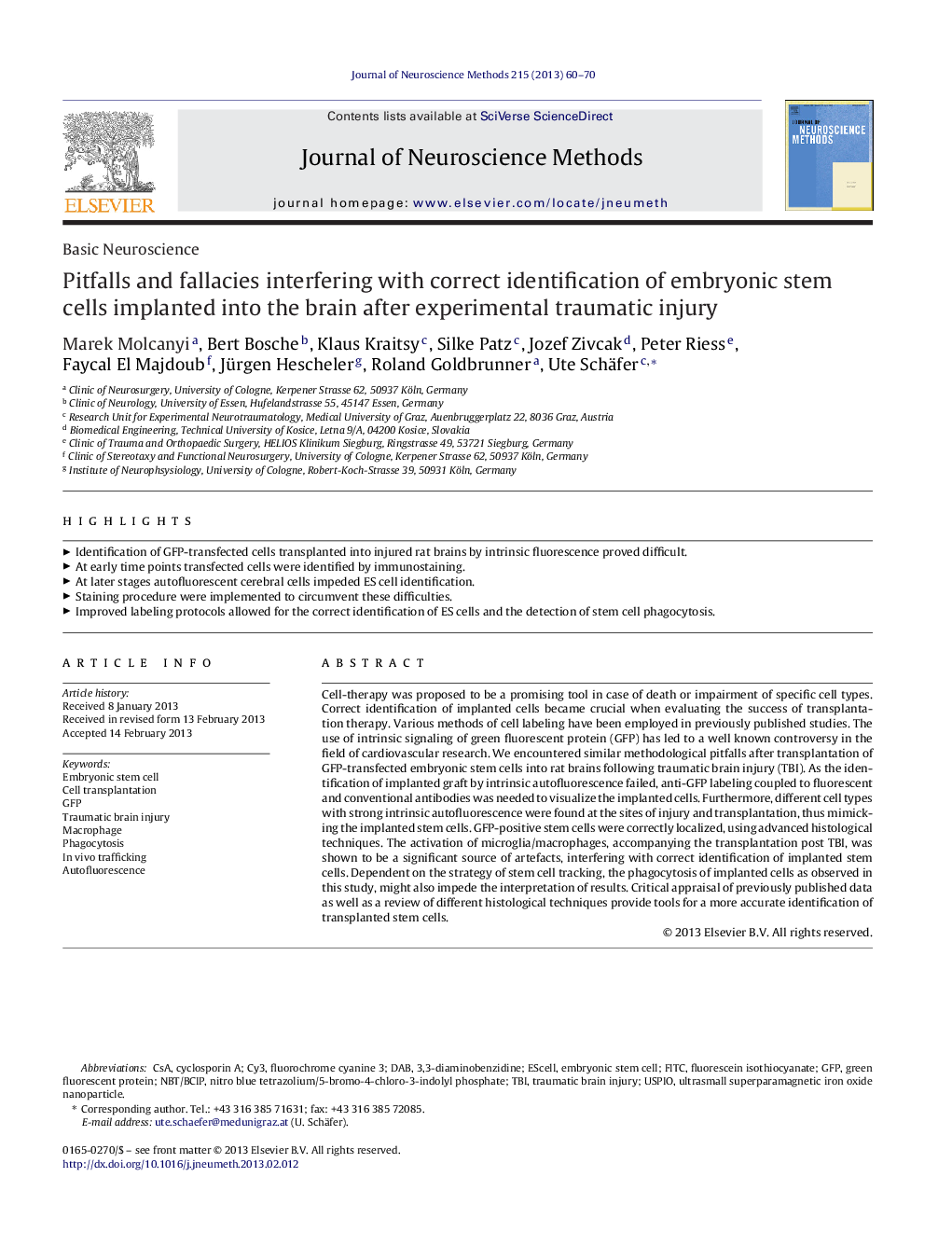| Article ID | Journal | Published Year | Pages | File Type |
|---|---|---|---|---|
| 6269153 | Journal of Neuroscience Methods | 2013 | 11 Pages |
Cell-therapy was proposed to be a promising tool in case of death or impairment of specific cell types. Correct identification of implanted cells became crucial when evaluating the success of transplantation therapy. Various methods of cell labeling have been employed in previously published studies. The use of intrinsic signaling of green fluorescent protein (GFP) has led to a well known controversy in the field of cardiovascular research. We encountered similar methodological pitfalls after transplantation of GFP-transfected embryonic stem cells into rat brains following traumatic brain injury (TBI). As the identification of implanted graft by intrinsic autofluorescence failed, anti-GFP labeling coupled to fluorescent and conventional antibodies was needed to visualize the implanted cells. Furthermore, different cell types with strong intrinsic autofluorescence were found at the sites of injury and transplantation, thus mimicking the implanted stem cells. GFP-positive stem cells were correctly localized, using advanced histological techniques. The activation of microglia/macrophages, accompanying the transplantation post TBI, was shown to be a significant source of artefacts, interfering with correct identification of implanted stem cells. Dependent on the strategy of stem cell tracking, the phagocytosis of implanted cells as observed in this study, might also impede the interpretation of results. Critical appraisal of previously published data as well as a review of different histological techniques provide tools for a more accurate identification of transplanted stem cells.
⺠Identification of GFP-transfected cells transplanted into injured rat brains by intrinsic fluorescence proved difficult. ⺠At early time points transfected cells were identified by immunostaining. ⺠At later stages autofluorescent cerebral cells impeded ES cell identification. ⺠Staining procedure were implemented to circumvent these difficulties. ⺠Improved labeling protocols allowed for the correct identification of ES cells and the detection of stem cell phagocytosis.
